When shopping for an important piece of jewelry, most people have their hearts set on a particular design or style. But when it comes to choosing the metal? That's where things get a bit hazy.
You might know whether you prefer gold, silver, or white metals, but you probably didn't realize there are multiple options within each color family. Understanding the differences between 14k and 18k gold, or navigating the world of white metals, can feel overwhelming, especially when you're trying to figure out why one option costs significantly more than another.
This guide will make all of this crystal clear. The precious metals I cover below are all well-suited for special, heavily worn jewelry such as wedding bands or engagement rings. As you read through, consider how each metal will meet your needs on three key fronts: color preference, lifestyle, and budget.

Understanding Gold Colors And Karats
Gold has been treasured for jewelry since ancient times, revered for its sun-like color and ability to polish to a lustrous shine. Of all the precious metals available today, gold offers the widest variety when it comes to both color and purity levels.
Gold Purity: The Karat System
Gold purity is measured in karats, with 100% pure gold being 24 karats. The 14k and 18k terms you're familiar with represent how many parts out of 24 are pure gold:
14 karat (14K) = 14/24 parts = 58.5% gold
18 karat (18K) i= 18/24 parts = 75% gold

Here's why this matters: Pure 24k gold is actually quite soft and can't withstand the natural wear and tear of everyday life. To strengthen it, gold is mixed with other metals, creating an alloy. This process not only makes the gold more durable but also affects its color.
Yellow Gold: Classic and Timeless
Yellow gold gets its warm, familiar color from being alloyed with copper, silver, and zinc. Alloys with higher karat numbers (like 18k) contain more pure gold, so they appear more yellow—closer to the natural gold hue.
14k vs. 18k Yellow Gold:
- 14k: More durable due to higher alloy content, slightly paler yellow color
- 18k: Richer, more saturated yellow color, slightly softer than 14k
Popular pieces in my collection include the Aurora Diamond Studs, Small Helios Hoops, and the Birthstone Aurora Necklace.
Yellow Gold
View All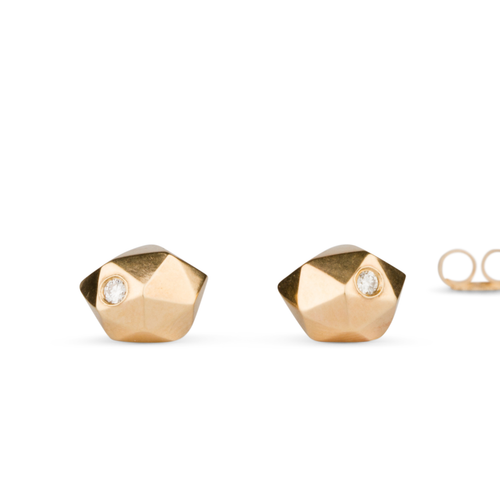




ROSE GOLD
Rose gold achieves its beautiful rosy hue by incorporating a larger portion of copper than silver and zinc in the alloy. The gold content remains the same as yellow gold of the same karat weight.
The Color Difference:
- Higher karat rose gold (18k): Appears more peachy due to higher gold content
- Lower karat rose gold (14k): Shows more pink tones due to increased copper content
Some of my favorite rose gold pieces include the rose gold wishbone studs, rose gold lucia studs, and the micro fragment diamond studs.
Rose Gold
View All
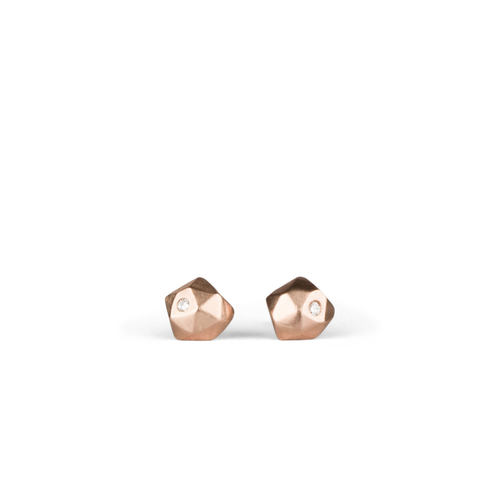



Navigating White Metals: Your Options Explained
The world of white metals gets more complex because there are multiple ways to achieve that coveted white-metal look. When choosing between white metal options, consider three main factors: potential metal allergies, color preferences, and maintenance requirements.
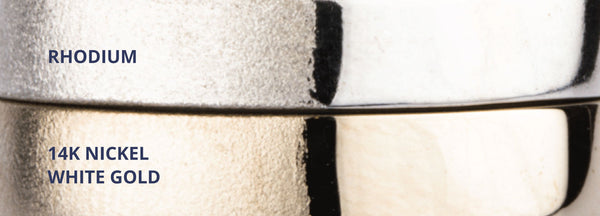 Nickel White Gold: Traditional but High-Maintenance
Nickel White Gold: Traditional but High-Maintenance
Traditional white gold uses nickel as a bleaching agent to remove gold's natural yellow color. However, this alloy still appears slightly yellow and is commonly rhodium-plated to achieve a bright white finish.
Important Considerations:
- Maintenance: Rhodium plating wears off and needs reapplication every 1-2 years (sometimes as frequently as every 6 months, depending on your body chemistry and wearing habits)
- Allergies: Nickel is the most common cause of metal allergies
- Cost: Generally less expensive initially, but ongoing rhodium plating adds to long-term costs
Popular nickel white gold pieces include the Lassen Band, Small white Gold Lucia Dangles, and the White Diamond Aurora Necklace
White Gold
View All

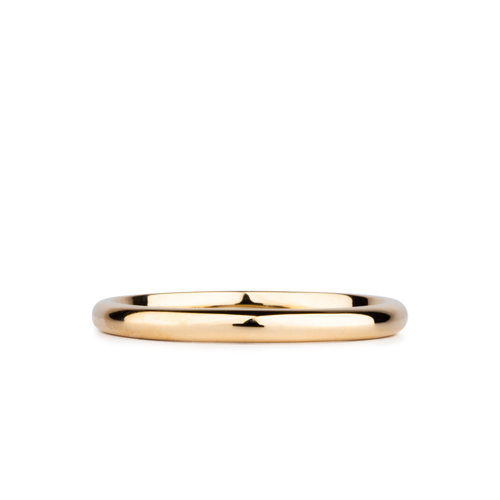


Palladium White Gold: The Best of Both Worlds
Palladium white gold uses palladium (instead of nickel) as the bleaching agent, combined with silver and copper. This creates a warm grayish-white color that's naturally beautiful.
Key Benefits:
- Hypoallergenic: No nickel means no allergic reactions
- Low maintenance: Looks excellent without rhodium plating
- Natural color: Warm grayish-white that doesn't require enhancement
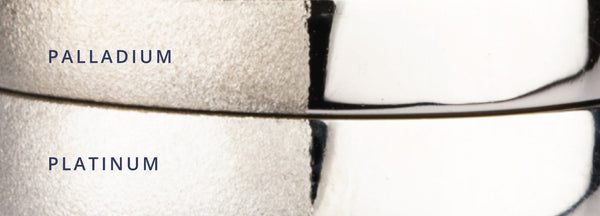
Palladium: Rare and Refined
Palladium belongs to the Platinum Metals Group and is rarer than gold. It's naturally grayish-white, just a touch darker than platinum, and is typically used in a 95% pure alloy mixed with ruthenium.
Why Choose Palladium:
- Durability: Excellent for holding diamonds securely while resisting scratches better than platinum or white gold
- Lightweight: Lower density makes it perfect for comfortable, everyday wear
- No maintenance: Naturally white color means no rhodium plating needed
- Hypoallergenic: Perfect for sensitive skin
Price Note: Palladium prices have increased significantly in recent years, check with your jeweler for a price comparison based on market values.
Platinum: The Ultimate Heirloom Metal
Platinum represents the pinnacle of precious metals for fine jewelry. This naturally grayish-white metal has been used in precious jewelry for centuries and remains the standard for luxury pieces.
Platinum's Unique Properties:
- Density: The heaviest precious metal, providing exceptional durability for intricate designs
- Malleability: Excellent for setting stones in complex designs
- Patina development: When scratched, the metal displaces rather than wearing away, creating a rich matte finish over time
- Hypoallergenic: Naturally pure and gentle on sensitive skin
- Longevity: Truly heirloom-quality that can last for generations
Investment Consideration: While platinum is the most expensive option, its rarity, purity, and durability make it worth considering for pieces meant to last a lifetime and beyond.
Making Your Decision
Choosing the right precious metal comes down to balancing your personal preferences with practical considerations:
For Classic Appeal: Yellow gold in 14k or 18k offers timeless beauty with proven durability.
For Romantic Style: Rose gold provides a unique, feminine touch that's currently very popular.
For White Metal Lovers: Consider your maintenance preferences and budget. Palladium white gold offers the best balance of beauty and practicality, while platinum provides ultimate luxury and longevity.
For Sensitive Skin: Stick with palladium white gold, pure palladium, or platinum to avoid allergic reactions.
Remember, there's no "wrong" choice—only what's right for your lifestyle, budget, and personal style. Each of these precious metals has been chosen by countless couples for their most meaningful jewelry pieces.
Ready to explore jewelry in your preferred precious metal? Browse my collections to see these beautiful metals brought to life in designs crafted for everyday elegance and special occasions.
Still have questions about how white metals perform head-to-head?
Read our white metals comparison for a deeper dive into your options.






